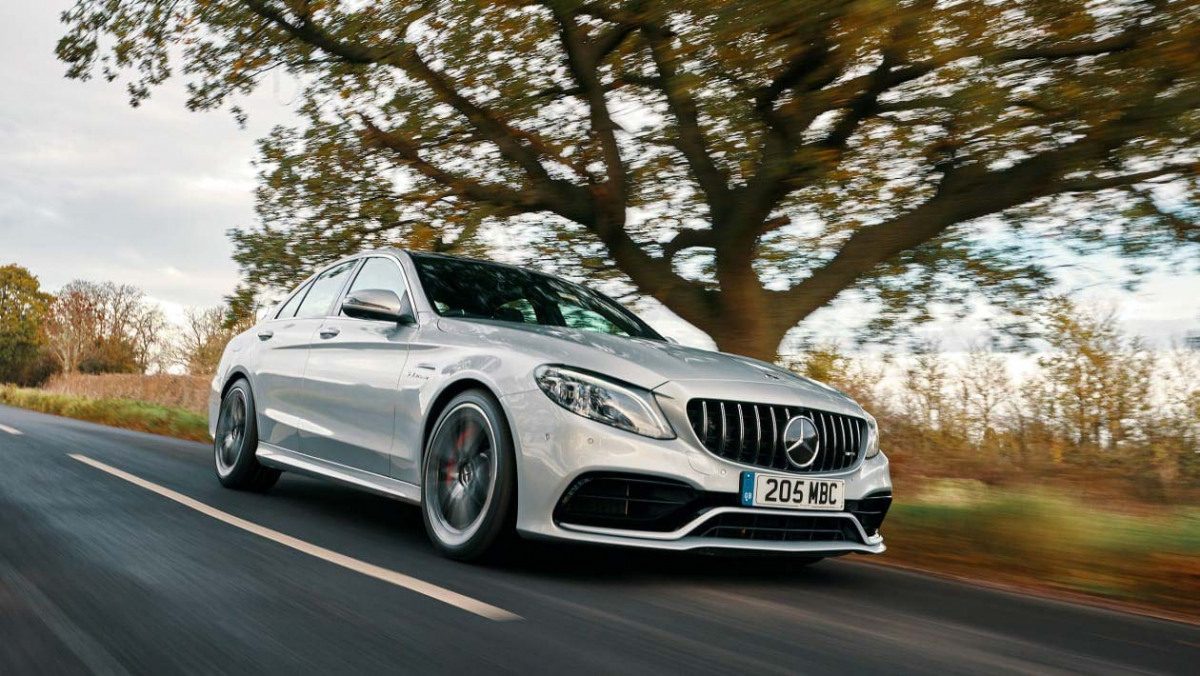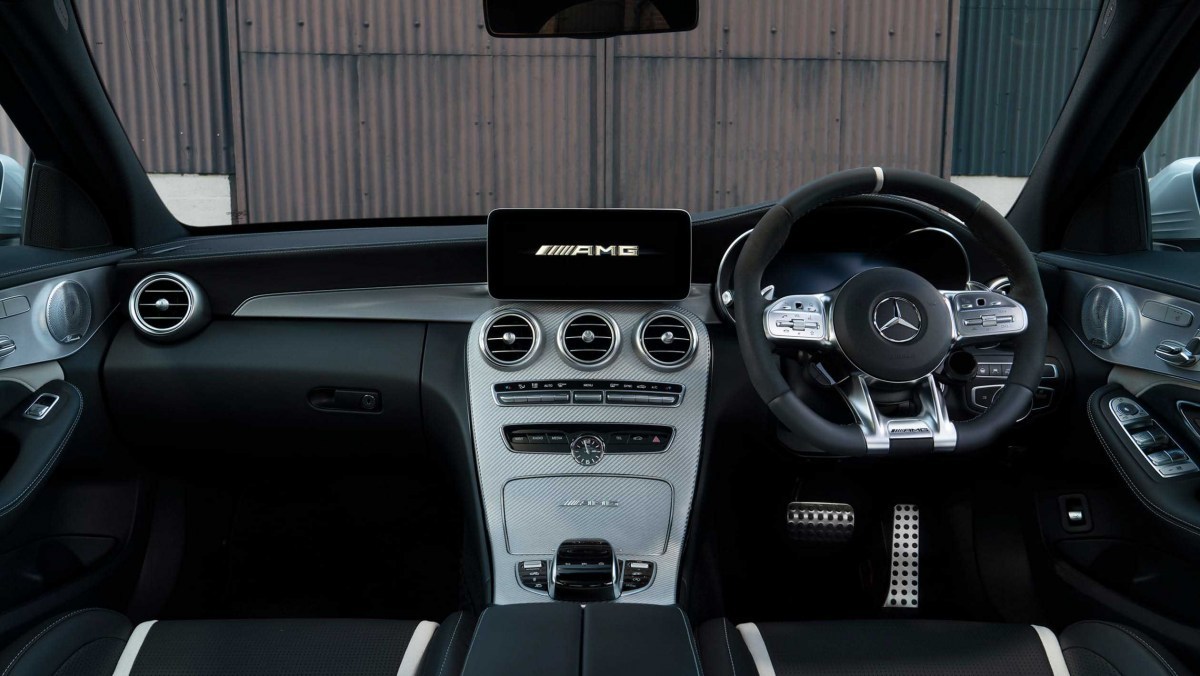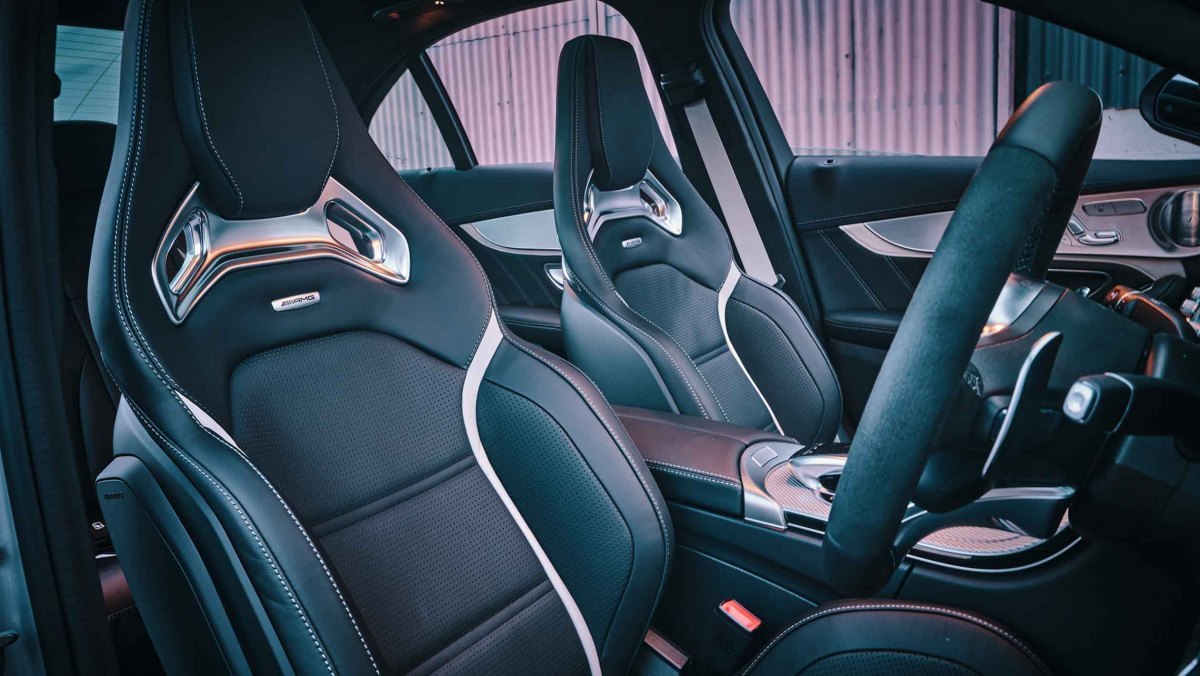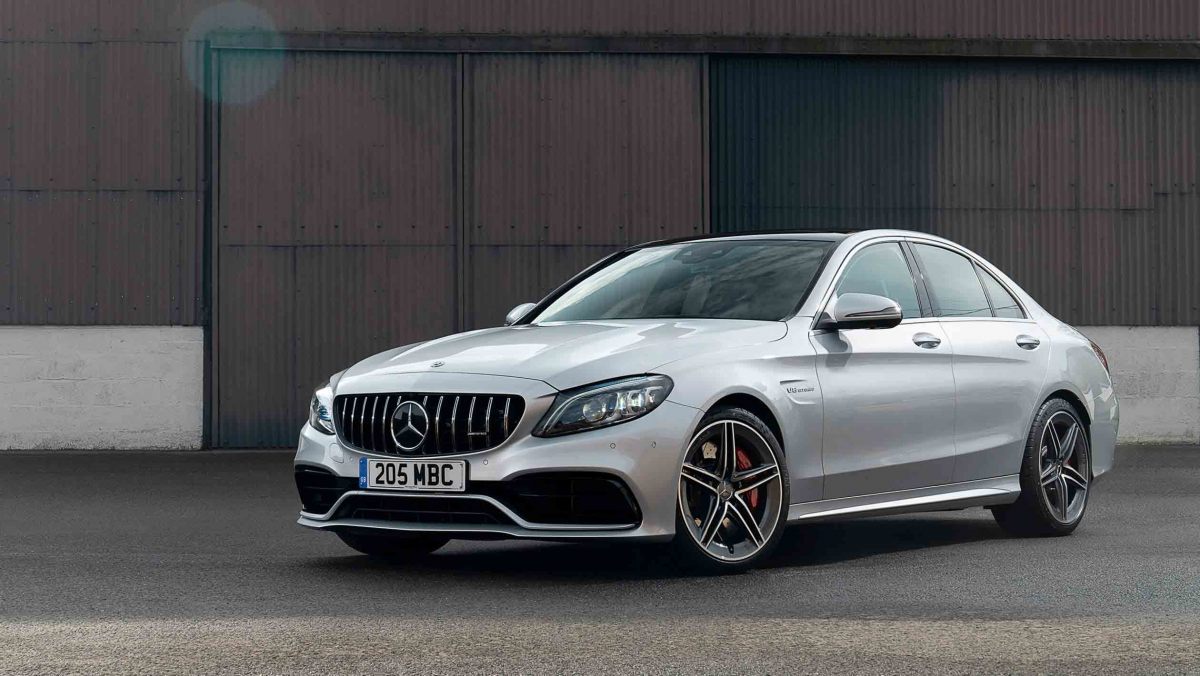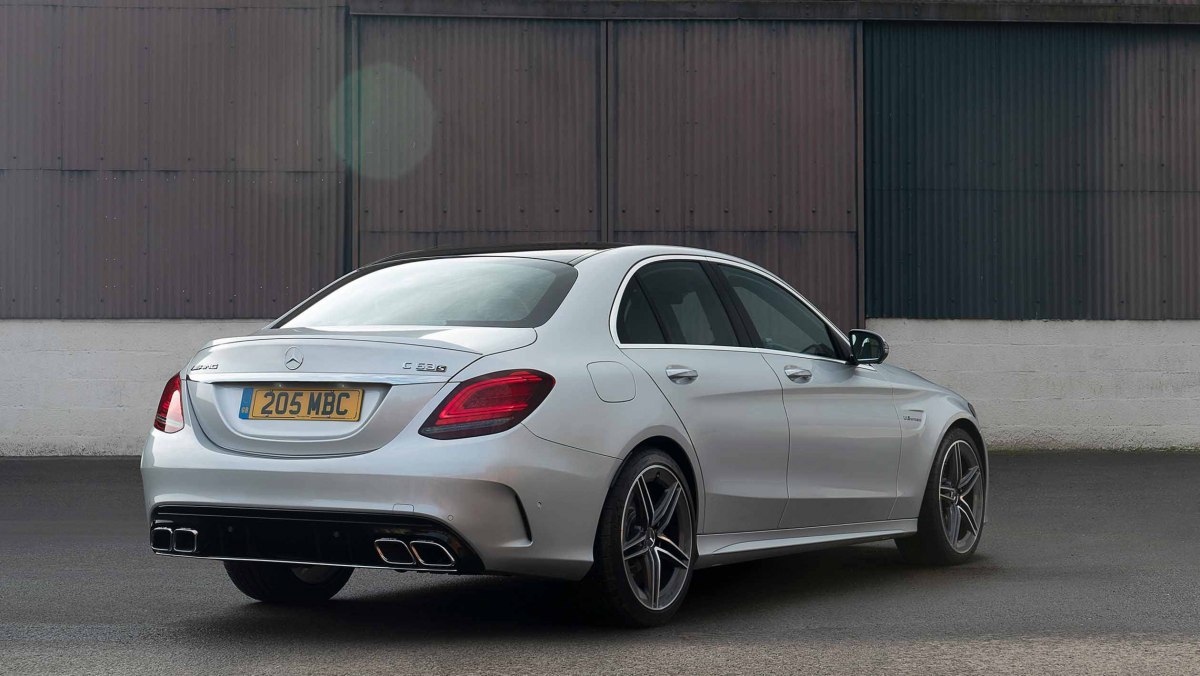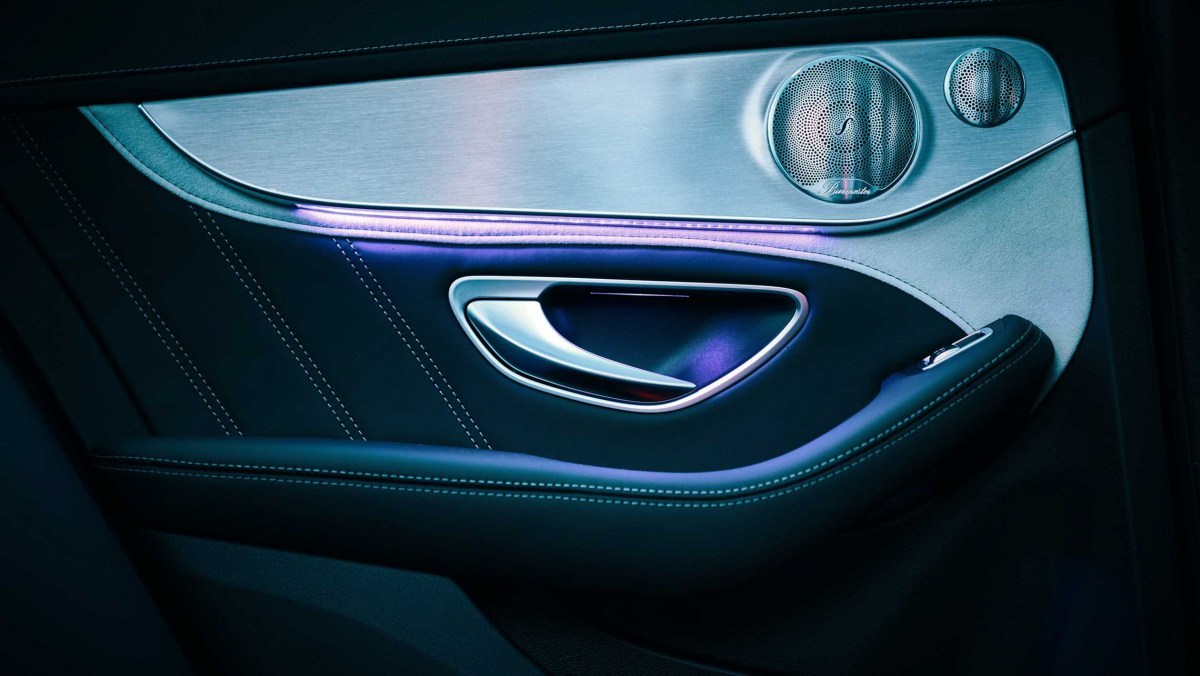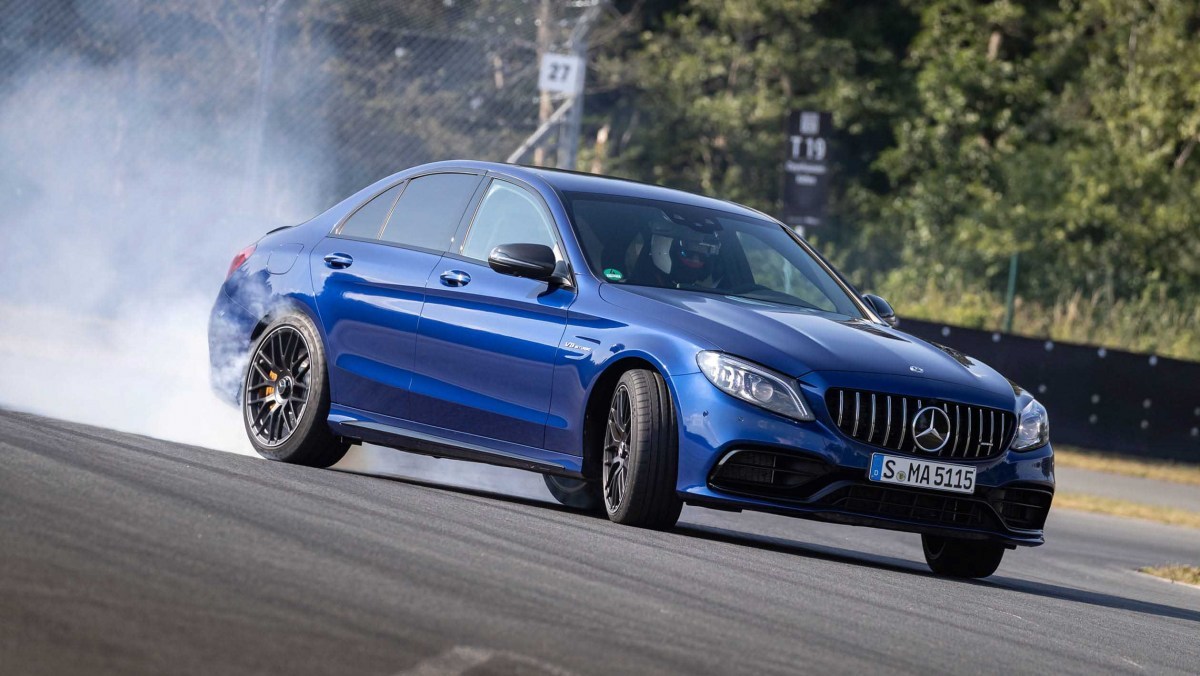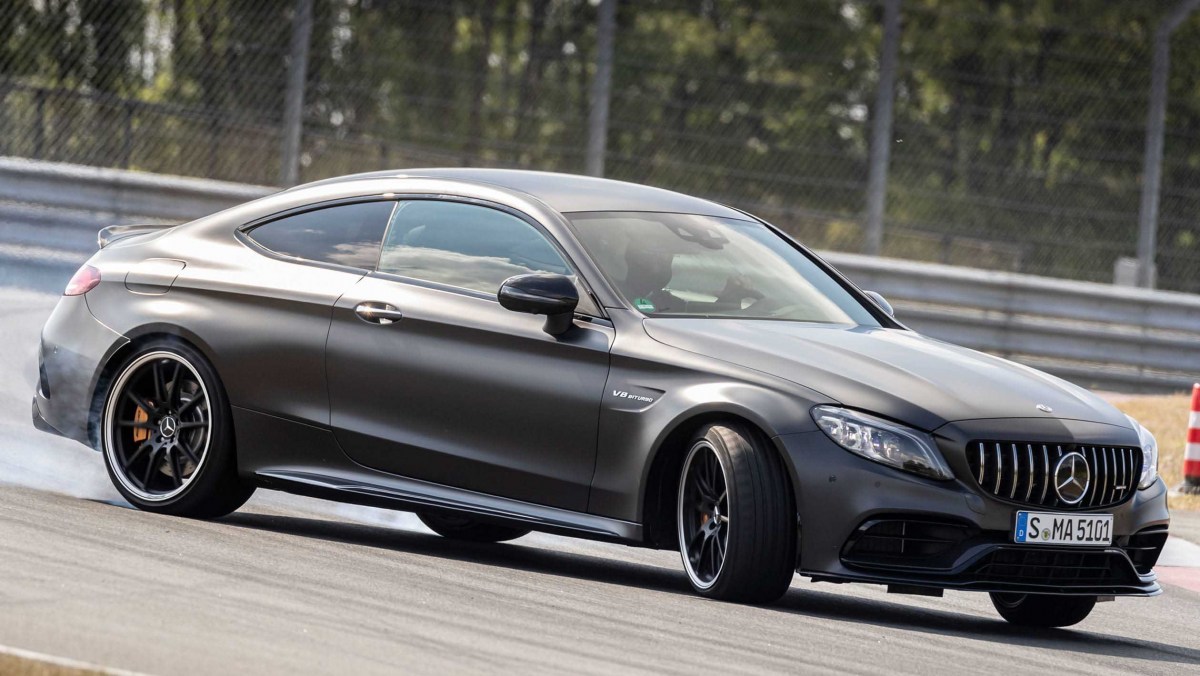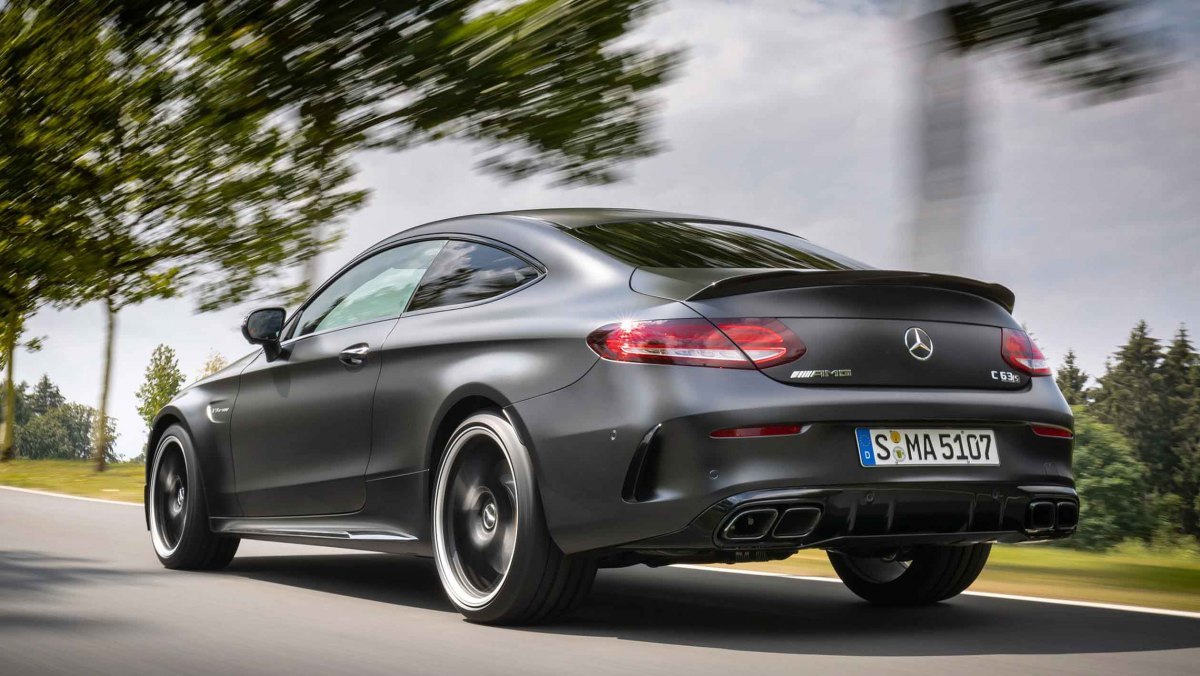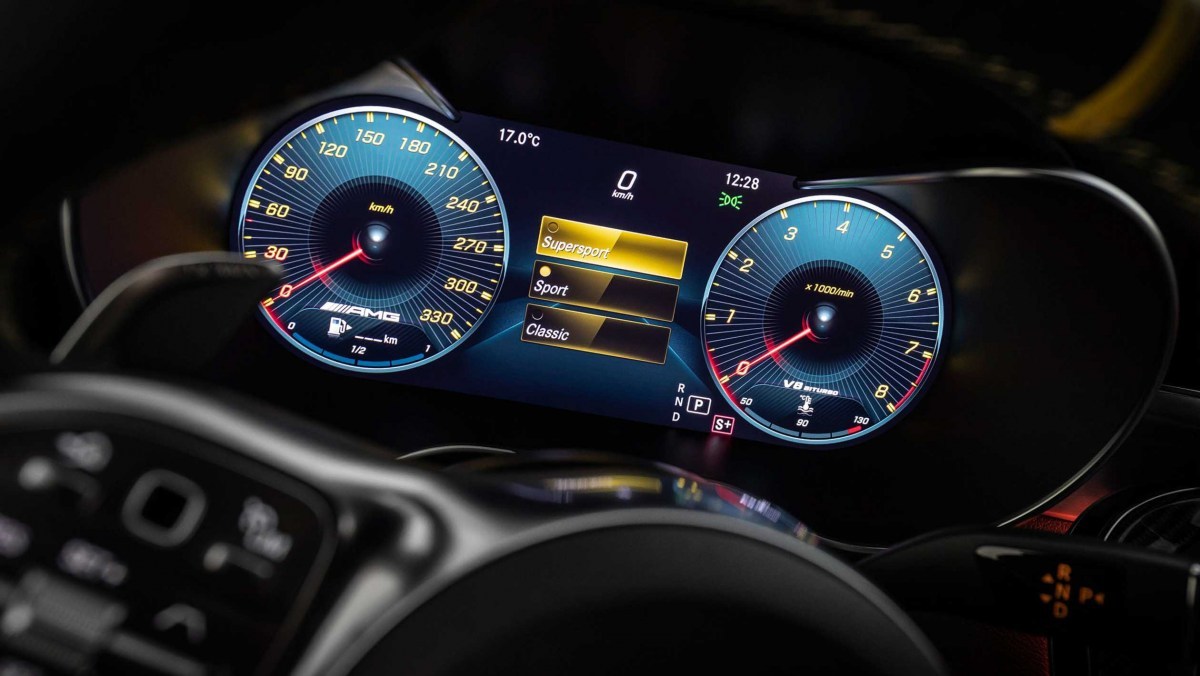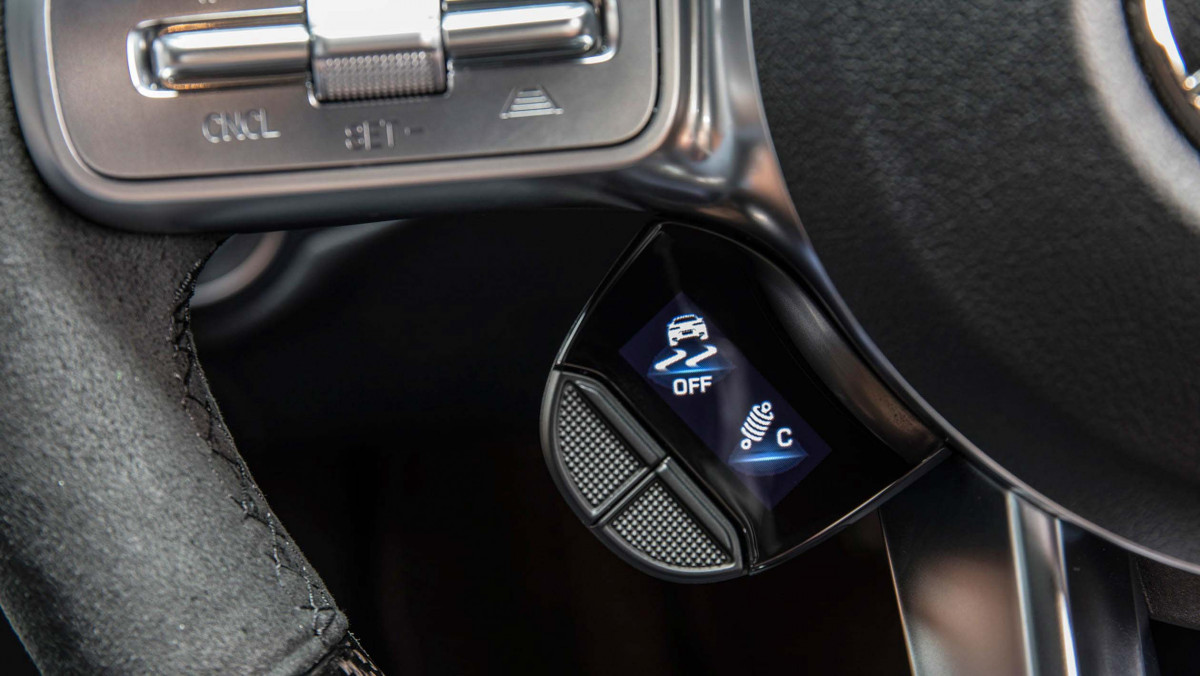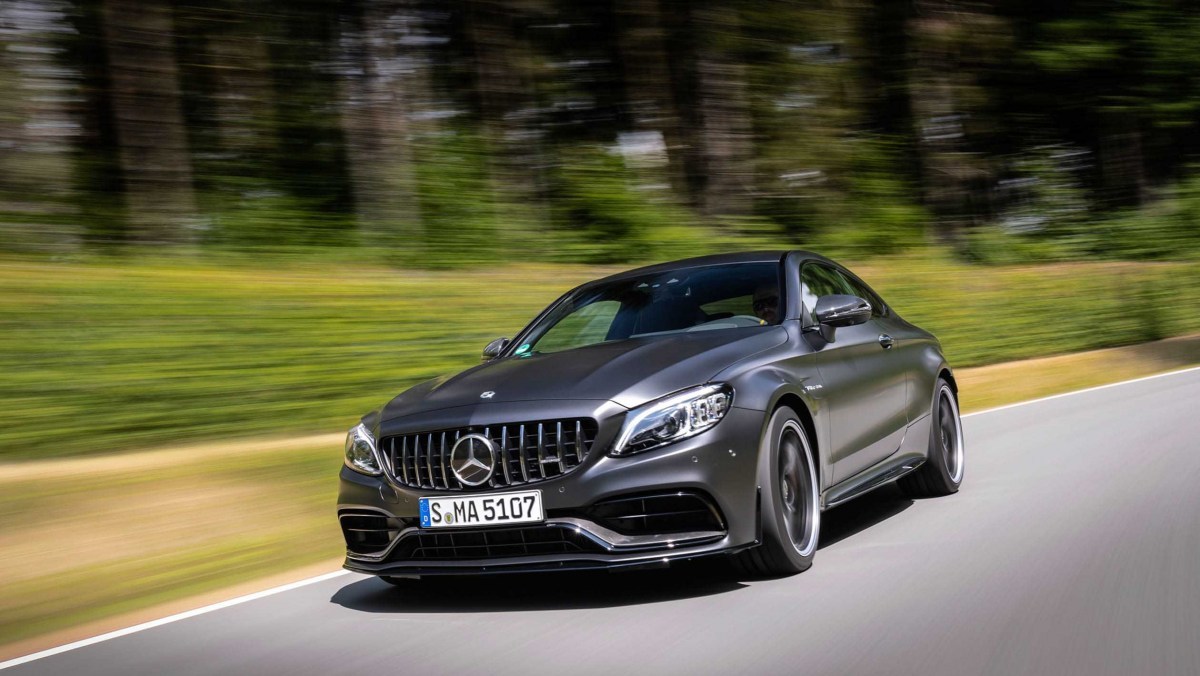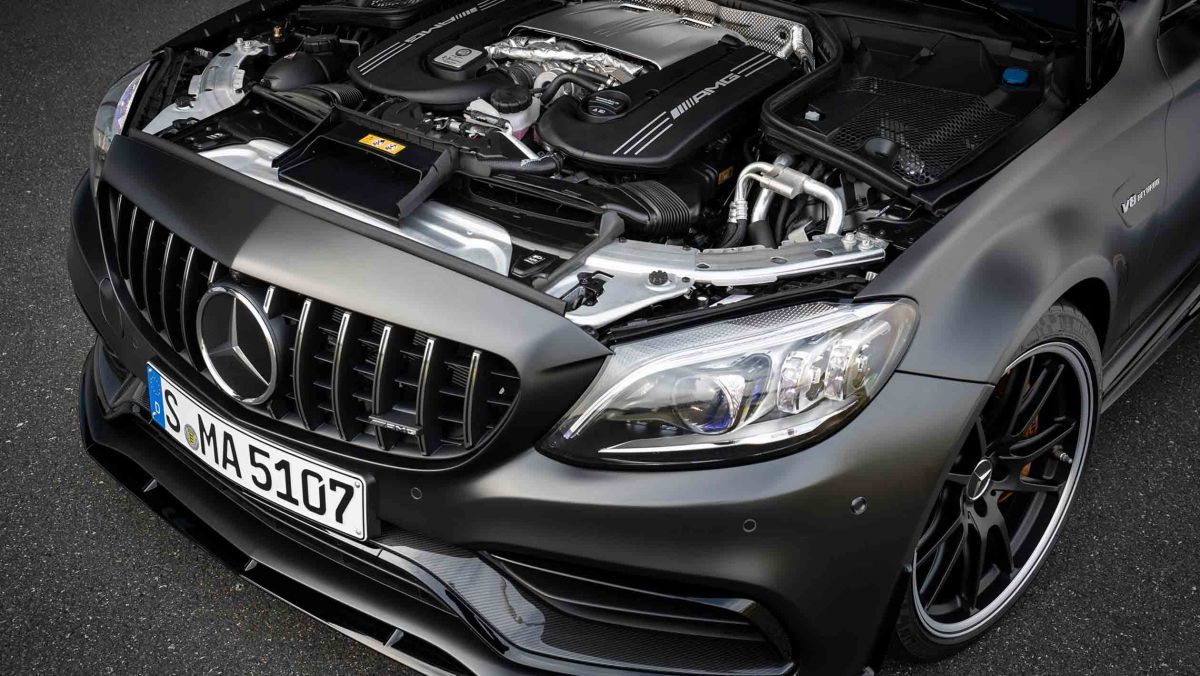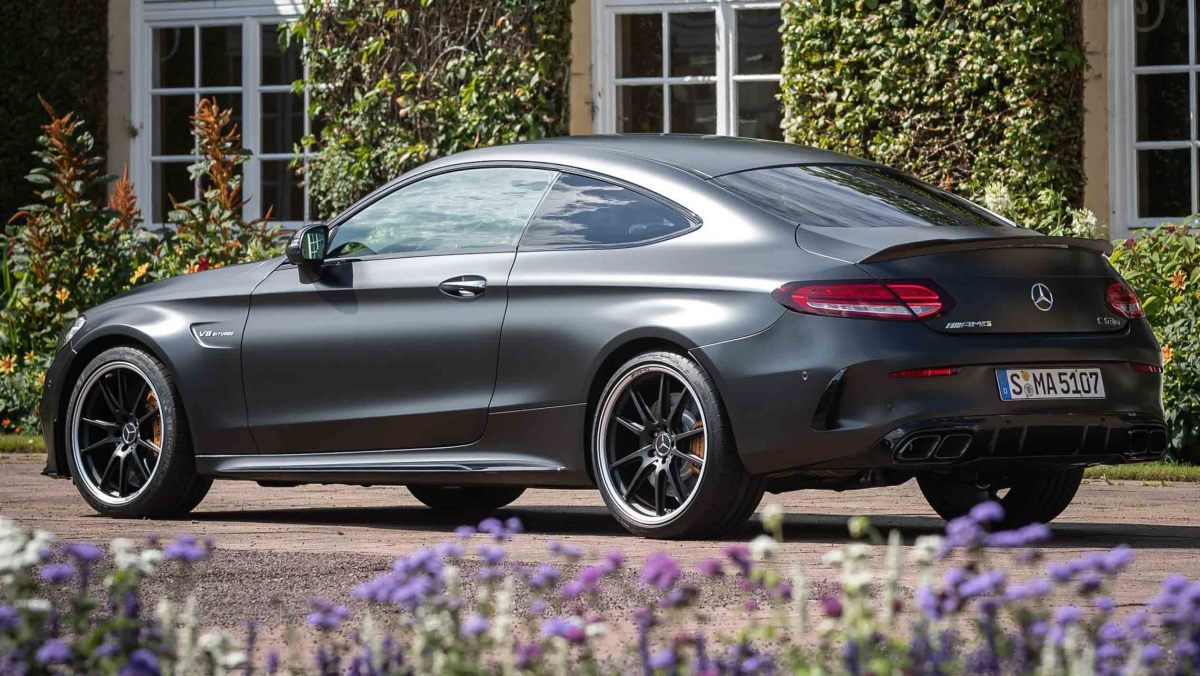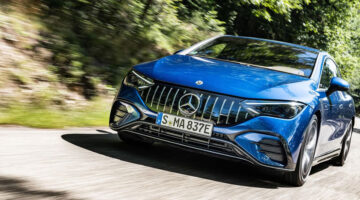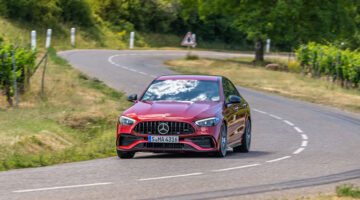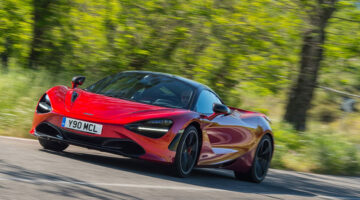AMG’s smallest V8 saloon still hits all the right notes. The C63 S is hard-edged, aggressive and superb fun to drive
| Engine’s as strong as an ox and loves to rev, new nine-speed gearbox | |
| Too many drive modes |
PRICE from $105,500
We rather like the Mercedes-AMG C63 S. Though 2015 saw the loss of the glorious M156 naturally-aspirated 6.2-litre V8, the current model’s torque-heavy turbocharged unit, hard-as-nails character and steely eyed focus on performance and driver thrills remained, and has endeared the line-up to us all at evo.
The full-fat C-class has seen an extensive change to its model positioning since its debut, ditching its lesser non-S forms and experiencing a hefty price rise along the way, but its specification has never been more comprehensive to compensate.
> All-new BMW M3 Competition revealed – an icon reborn
Time moves quickly though, and while the C63 S held its title as the most powerful compact sports saloon for a time, its six-cylinder rivals from Alfa Romeo and now BMW have it matched – and sit within some very chassis’ to boot.
Engine, transmission and 0-100 time
Is there a performance engine used in more applications than AMG’s 4-litre V8? I ran out of digits after I’d counted 20 models the twin-turbocharged engine is fitted to. This includes anything from the two-seater GT R, a five-metre plus long limo (S63), roadsters, coupes, saloon and estates, seven-seat SUVs and, of course, the G wagen.
Only the hot S variant is available for local buyers in 2020, with the entry-level 469bhp unit ditched entirely – the S variant produces 503bhp between 5500 and 6250rpm with torque escalating to 516lb ft from 2000 to 4500rpm.
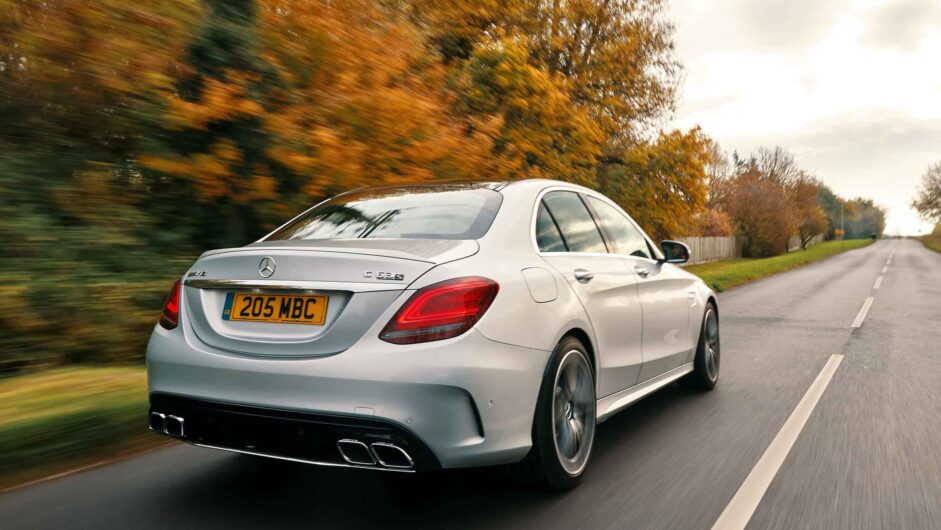
All C63 models are fitted with a nine-speed AMG Speedshift MCT auto, now with a wet-clutch instead of the torque converter in the old seven-speed. Not only is the new ‘box lighter but it also benefits from quicker response times under acceleration. In manual mode you can blissfully hit the engine’s limiter with the ‘box refusing to change up until you’ve flicked the right-hand paddle. And an electronic limited-slip diff is fitted to all models, regardless of engine output.
The quickest of the refreshed C63 range is the Coupe, reaching 100kph in 3.9sec and limited to 290kph. The saloon takes a further 0.1sec, with the S Estate and Cabriolet a further tenth behind at 4.1sec.
Technical highlights
Are you sitting comfortably, warm/cold brew in hand depending on your time zone? Good, then we’ll begin with the revised C63’s range of technical wizardry.
We’ll start with the AMG Dynamic Select drive functions. There are six in total, five pre-programmed: Slippery, Comfort, Sport, Sport +, Race and Individual, the latter lets you select your desired engine, gearbox, damping and exhaust setting.
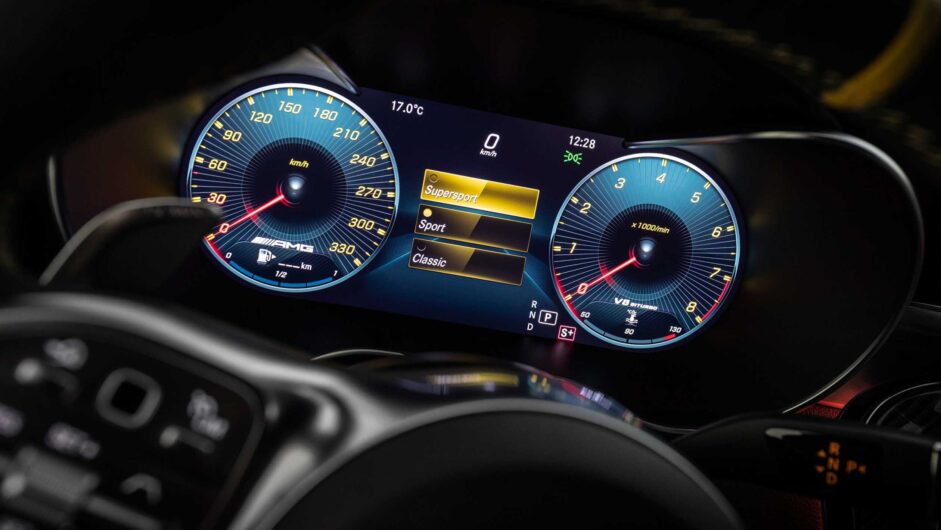
It doesn’t stop there, because both engine derivatives are also available with AMG Dynamics. A new piece of tech, it works with the ESP system (more of that later) to allow more measured and precise distribution of torque to the rear axle. An automated system, AMG claims it will react more quickly to a situation (which it has calculated) than the driver can.
Naturally there is more than one setting for AMG Dynamics, too. Basic is for when you are in Slippery or Comfort mode. Advanced is activated when you select Sport and lowers the steering angle and yaw damping, allowing for the steering to be more responsive. Pro is connected to Sport +, sharpens the steering further still and claims to provide the driver with more assistance. Then there is Master, linked to the Race mode it allows a slip of oversteer and livens up the steering even further. To use Master you also need to slacken-off the ESP to ESP Sport mode or turn it off completely.
Next it’s AMG Traction Control. Introduced with the AMG GT R, this nine-stage system is only available on C63 S models. With ESP switched off the scale ranges from Level 1 for wet conditions and a high safety net all the way to Level 9 to allow the rear axle and standard electronic diff to dance around until its Michelin Super Sports have had enough.
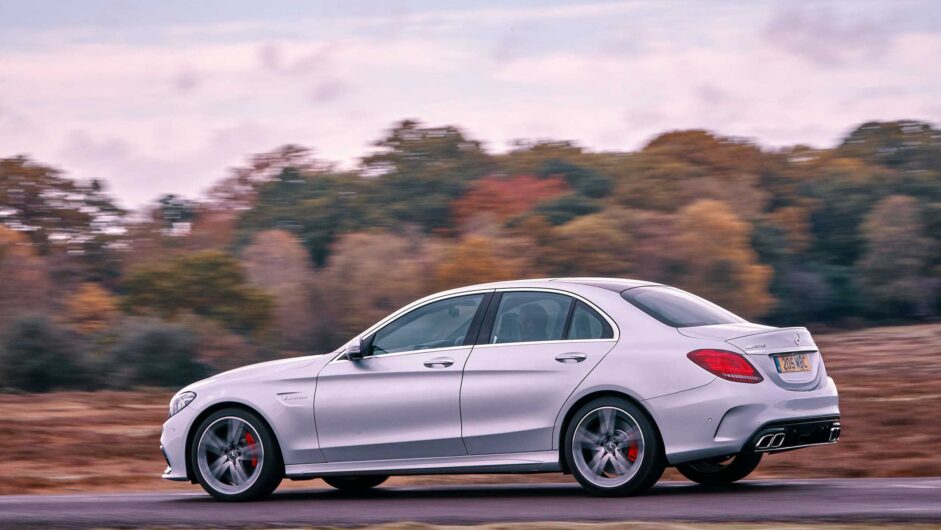
AMG Ride Control is standard and combines steel springs with adaptive dampers that can be configured as thus: Comfort, Sport and Sport+. And finally (stop cheering at the back), it gets dynamic engine mounts as standard.
Inside the changes are a little less comprehensive. There’s a new 12.3-inch digital display for the instrument cluster and a 10.5-inch display for the infotainment system which includes access to AMG Track Pace – an on board data logger for you frustrated Lewis Hamiltons. There’s also a complex AMG steering wheel featuring touchpad controls first seen on an S-class and mode controllers that integrate their own tiny screens.
What’s it like to drive?
Like a C63 S that’s been through a very thorough once-over and freshen up. Its thunderous V8 still leaves you in no doubt that this is a supersaloon for those who enjoy their muscle cars served with an extra slice of aggression. Initially you put this down to the twin-turbocharged V8’s aggressive soundtrack – even when you’ve left the drive mode in normal it delivers above and beyond both Audi’s and BMW’s six-cylinder turbocharged alternatives – but it doesn’t take long to discover the latest AMG delivers across the board.
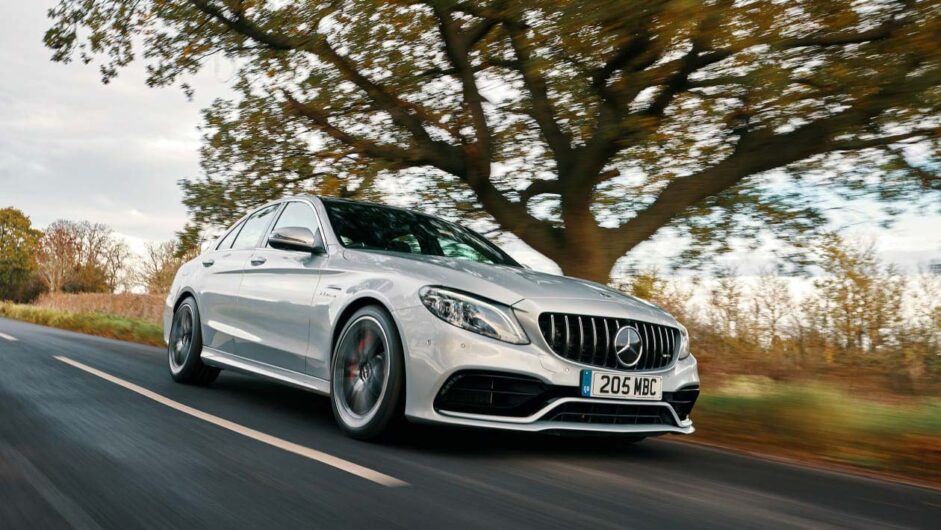
Benefiting from its inherent grunt advantage, as well as a throttle response and a willingness to rev that its six-cylinder rivals just can’t match, only the naturally aspirated V8 that Lexus wedges into its RC F coupe is ahead of the C63 S in the throttle response stakes. But it’s the free-revving nature of the AMG’s 4-litre V8 that’s most unexpected, with lag non-existent and responses on a par with some of the very best naturally aspirated engines of the past.
The new nine-speed MCT Speedshift gearbox is a huge contributory factor to the improvements felt from the V8. Naturally the evolutionary life cycle has resulted in shifts that are both sharper and quicker, that’s a given. But the nine ratios (up from seven) within the casing feel better suited to the engine’s characteristics, too. Unlike some of today’s turbocharged V8s of a similar capacity, the AMG unit is happy to take a lower gear when rivals would prefer you to roll along on a wave of engine torque. And in the C63 this makes you feel more in control of the action, integral to every process of the drivetrain’s performance.
A result of the C63 S’s more focused nature is its harder-edged approach to dynamics. It’s not harsh for the sake of it, every tight damper movement allowing for more commitment and a greater depth of connection between the fleshy bit behind the wheel and, well, the wheels themselves. On the car’s international launch in Germany we came away with a fear that the billiard-table smooth test roads were masking a brittle ride and solid chassis. Thankfully that’s not the case. Yes, a C63 S is firmer than the F80 M3 and Audi’s RS4, but the pay-off is a far more naturally reacting car.
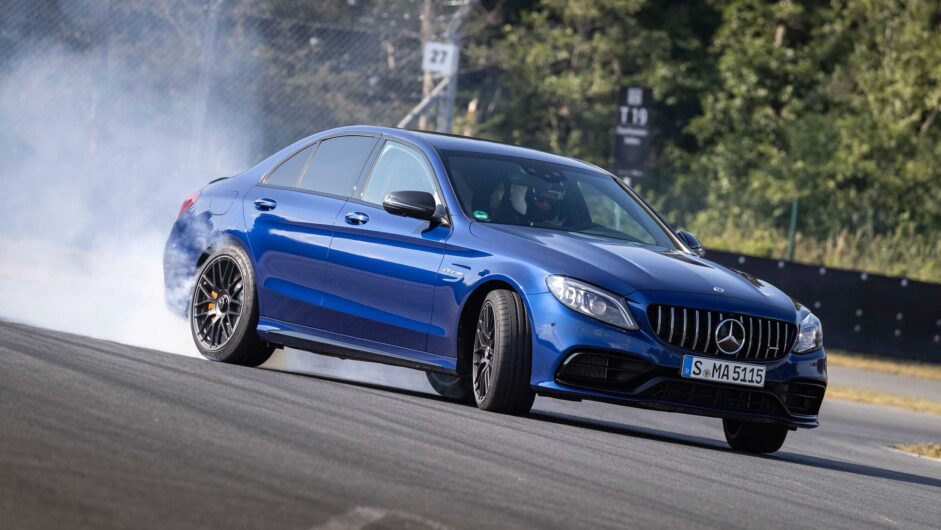
There’s an alertness to the steering that’s missing in some rivals, with the front tyres hooking up early and allowing the rear axle to provide the shove out of the corner. With AMG’s nine-stage traction control (taken from the AMG GT R and a system that requires time to explore and experiment with to find your perfect set-up) the attitude and the angle the rear axle can take through and out of the corner is all down to you and how friendly you want to be with your local tyre fitter. Gratuitous oversteer aside, the new TC system does allow you to tailor the C63’s dynamics to suit your preferred driving style, adding an additional layer of detail to its behaviour. It’s one of those rare pieces of technology that adds more to the driving experience that it removes.
There are two obvious omissions, however, as the C63 S in any form still lacks the final layer of alacrity and alertness that makes our two favourite sports saloons so brilliant in any conditions. The Alfa Romeo Giulia Quadrifoglio’s supercar-like responses and superb chassis make the 63 feel lumpen and lazy by ultimate comparison, while BMW’s new M3 Competition takes a more brutish, if no less sophisticated approach. Despite the Alfa’s equivalent age, it still has the C63 S licked for outright enjoyment while the new M3 is without doubt the step-change forward befitting its all-new underpinnings. How will AMG respond with its next C63? Rumor has it the V8 will be left behind, but unlike BMW and Alfa the answer doesn’t lie with a six-cylinder…
Price and rivals
Entry-point to AMG C63 ownership starts at $105,505 for the C63 S saloon, while the Coupe S will set you back in the region of $113,000 – the more practical C63 S Estate will set you back from $107,210. All local market C63s are the S variant, with more power and features such as an electronically controlled limited slip differential. There are two option packages available, comprising a Premium Plus Package for $4850 that bundles elements like a panoramic roof, Burmester hifi and electric seats, and a further Carbon elements pack.
Direct rivals include the new $108k BMW M3 Competition, which really has taken the game up a notch, and if two rather than four-doors takes your fancy, the M4 Competition is also available for a touch more cash at $110k.
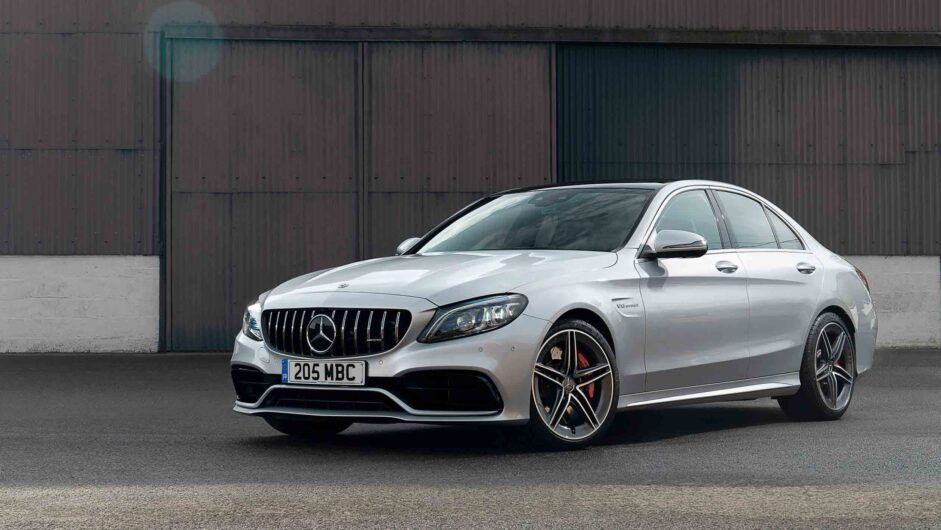
Alfa’s Giulia Quadrifoglio by comparison feels like a resolute bargain, starting at ‘just’ $96,605, and while it still does lack the polish and quality of its German rivals, hits back with a driving experience that’s arguably even more rambunctious and entertaining.
Audi’s six-cylinder RS4 Avant costs $90,475, with its RS5 coupe and Sportback siblings both costing from $97,300, yet the Audi’s 444bhp is feeling particularly behind the curve at the moment, but it does do the GT thing better than any of its more focused rivals.
Leaving Germany for a moment, there is also Lexus’s rather splendid $127,660 RC F coupe, a leftfield choice but one with the most charismatic engine of the lot and an unexpectedly sweet chassis, too.
This article originally appeared at evo.co.uk
Copyright © evo UK, Dennis Publishing

